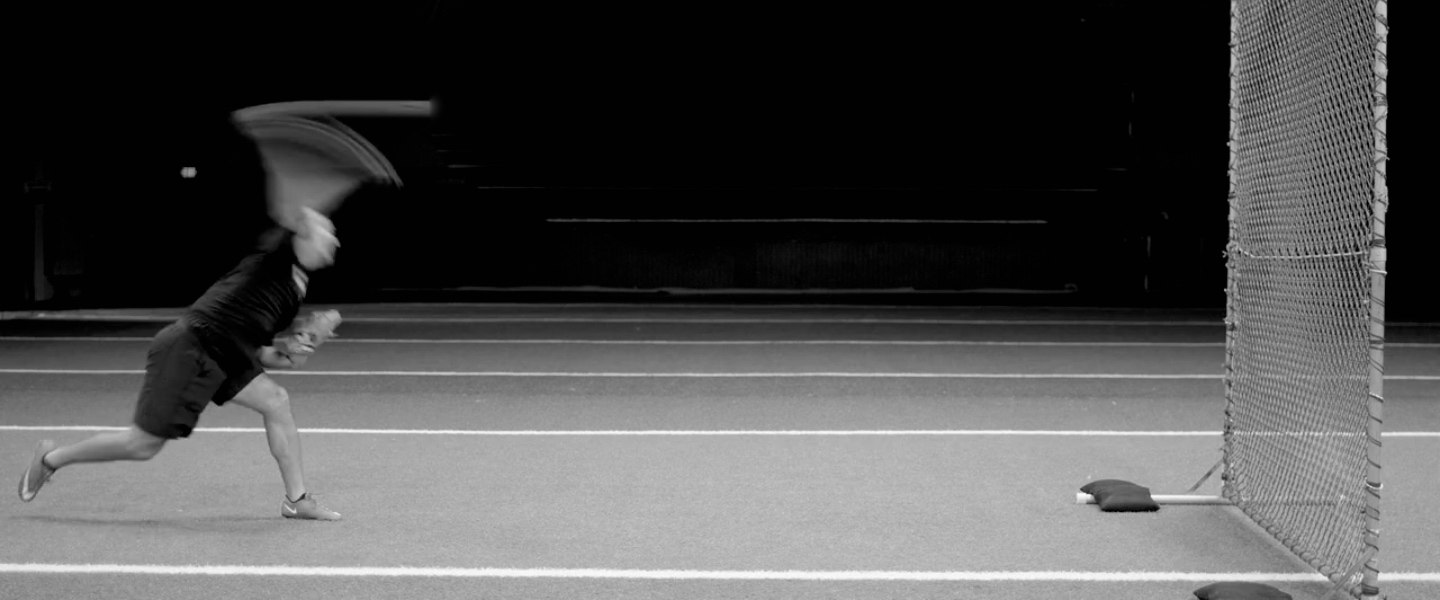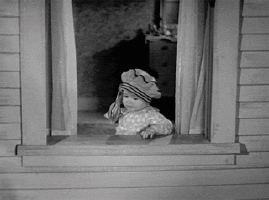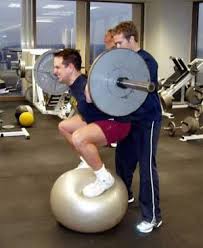Demonizing Weighted Balls – A Review of Criticisms

A common line of argument against training with weighted balls goes something like this:
“Weighted balls only train the arm. Good pitching training trains the athlete to use the whole body to accelerate the arm to the target, minimizing injury risk.”
This line of thinking makes some fundamental assumptions about pitching velocity creation that are misguided, but admittedly we live in a character-limited world so this post will try to unpack some of this sentence.
What Do Weighted Balls Train, Exactly?
“Weighted balls only train the arm.”
Weighted balls are a tool. But tools do not train movements. Drills train movements.
The weight of something is just a means to manipulate the load an athlete feels and promote better fitness, movements, or both. A barbell doesn’t train your legs. Squatting a barbell trains your legs. And the weights on that barbell determine the training effect.
Since specific tools are only as useful as the method of implementation, it would be completely idiotic to criticize a tool alone.
Hammers are not inherently bad tools simply because they will not put in a lightbulb or you smacked your thumb with one. However, they are one tool of many that should be used properly to build a house.
Running to Throw Only Trains the Arm
The lack of clarity in the above statement probably suffers from 140-character limits and what these critics mean to say is something like:
“Running to throw weighted balls only trains the arm. Good pitching training trains the athlete to use the whole body to accelerate the arm to the target, minimizing injury risk.”
Throwing is naturally an entire-body movement, however. Any athlete who is throwing (running or not) is using his entire body to execute the movement.
But this guy is.
Plus all balls are weighted. A 5-ounce baseball is not optimized to maximize throwing velocity and minimize injury risk. Five ounces is an accident of history.
We know of no weight of baseball that optimizes the performance/injury risk curve for all athletes.
Probably what critics of these drills are suggesting then is not that running to throw only trains the arm but that running throws artificially accelerate the arm.
The arm gets artificially accelerated
A more properly worded criticism might be:
“Running to throw balls artificially accelerates the arm. Good pitching training trains the athlete to use the whole body to accelerate the arm to the target, minimizing injury risk.”
But there is not a way to “artificially” accelerate the arm. Arm acceleration is a product of the efficiency of an athlete’s kinetic chain and his ability to produce and accept force. We have seen pitchers gain velocity quickly using weighted balls plus other drills, and it is impossible to attribute percentages of those gains to specific drills.
Observing that, the most logical explanation is that the athlete already had an underlying capacity to throw harder based on certain fitness markers, but his current movements suppressed his ability to express that maximal velocity.
Basically, that the kid could throw 90 but his mechanics and physical preparation only allowed him to express 82.
Athletes come to Driveline to learn how to throw harder and minimize injury risk–to fill in the gap between how hard they do throw and could throw while improving the ceiling of how hard they might throw in the future.
Running throws with underweight balls are one drill for athletes to try to bridge that gap. Many other drills we use do so as well. And, when an athlete has success, it is all aspects of training together that produce a positive outcome.
When executing a running throw, the athlete learns lead leg bracing, sequencing, intent and internalizes a better arm path with his arm moving fast. That’s it.
We aren’t asking the running throw to also train many hundreds of other teaches or cues. But those four components have a big impact.
The drill is useful because it promotes several better movements at once with the simplicity of one cue: “Throw Hard.”
And all those movements positively correlate to the mound.
You don’t use mound mechanics and that is stressful
Probably no one would believe you could use a tool like a ball to artificially juice up your arm speed–and this is likely just a simple way of phrasing a more complex concept for people to understand, probably what is meant by critics then is:
“Running to throw a ball requires an athlete to use his whole body to naturally accelerate and decelerate their arm and improves certain markers for mound velocity BUT the movements are so different from mound mechanics that it will cause a lot of stress. Good pitching training trains the athlete to use the whole body to accelerate the arm to the target, minimizing injury risk.”
The idea that a great pitcher replicates his motion exactly on every throw is a fallacy. What we perceive as replication is merely minimization of degrees of freedom at each point in the delivery. Each pitch of the 100 in a game appears the same but isn’t an exact replica.
Because the end ranges of motion for an athlete are tested in games, being able to train to safely produce and accept force at those same end ranges of motion (or even a bit further) is a huge positive for an athlete’s durability and arm health. When an athlete does reach back for a little extra on their fastball or tires in the 7th but wants to stay out there to protect the bullpen, he can rely on training that has prepared him for those movements and execute them with conviction.
Running throws do differ from mound throws, and that difference is what makes them a worthy drill.
Being able to produce and accept force through an increased range of motion yields a more robust athlete from an injury prevention standpoint, creates positive tissue adaptation to fatigue across a greater range of motion, and gives them a framework for how to sequence their body and translate running throws to the mound.
Won’t Ever Learn Command
For many, it is not intuitive that training stress is a positive but is definitely well-studied. Maybe a more apt criticism of running throws might be:
“Running to throw balls does improve an athlete’s ability to use their whole body to accelerate and decelerate their arm, improves markers for mound velocity, and improves their durability BUT when athletes sell out for velocity they will never learn to command the ball. Good pitching training trains the athlete to use the whole body to accelerate the arm to the target, minimizing injury risk.”
Learning to throw a variety of differently weighted implements increases an athlete’s ability to understand how their arm is moving in space (proprioception). Command is being able to repeatedly accelerate your arm through a tiny window at release point.
Improving proprioception improves your ability to execute a pitch through that window reliably.
While the goal of running throws with weighted balls is not to hit a target, the motor learning achieved by varying the stimulus for the athlete carries over once mound work begins.
Nobody Ever Got Signed with a Running Throw
What really matters for athletes is getting to that next level–and as trainers we have to help them get there using whatever legal means necessary. A more nuanced criticism would be:
“Running to throw balls does improve an athlete’s ability to accelerate and decelerate their arm, improves markers for mound velocity, improves their durability, and improves an athlete’s proprioception for his throwing motion BUT scouts and recruiters care about results on the field, no one ever got signed for how hard they threw on a crow hop–better to spend that time on the mound. Good pitching training trains the athlete to use the whole body to accelerate the arm to the target, minimizing injury risk.”
Actually Spencer Mahoney got signed without having thrown off a mound in 6 years just because he threw balls 100-102 MPH from a crow hop.
Baseball scouts care much more about ability when ability is scarce.
Good Pitching Training Trains The Whole Body to Accelerate the Ball
So maybe a more fully fleshed-out statement about high-output throwing is this:
“Good pitching training trains the whole body to accelerate the arm to the target, minimizing injury risk.”
Running to throw a ball improves an athlete’s ability to accelerate and decelerate their arm, improves markers for mound velocity, improves an athlete’s durability and command, and creates a positive signal for scouts and recruiters.
So running throws should be considered as a part of any good pitching training program.”
Part is important. In our flagship training manual Hacking the Kinetic Chain we have year-round programming for different types of pitchers, below is a basic breakdown of training activities by time spent per week during the off-season for an on-boarded athlete:
Warm-Up: 25-35%
Throwing Drills: 15-25%
Pulldowns: 2.5-7.5%
Recovery: 30-50%
55-85% of time is spent on warm-up and recovery. Less than 10% of time is spent doing pulldowns.
Are they important? You bet. Is it fun to watch guys compete against each other? Absolutely.
Is it the most important part of the training? Depends, but likely not.
If you want to see benefits from high-output training of any kind (lifting, throwing, etc), you have to be willing to put in time doing the boring prep work.
Do Bad Weighted Ball Programs Exist?
Yes. We aren’t going to sit here and say that every coach who has implemented a weighted ball program has done it smartly or well.
And we are constantly learning how to improve our own methods.
However, demonizing a tool simply because someone once did it stupidly is neglecting an avenue for you or your athletes to improve.
Or it is a marketing ploy, albeit a misguided one.
Bad weighted ball programs rely on throwing alone to produce the training effect and completely neglect warm-up and recovery. This is backwards.
Recovery is the most important part of high-output training.
Recovery is the most important part of high-output training.
Recovery is the most important part of high-output training.
It gives the athlete enough time to produce a physical response. Layering max throwing on top of max throwing overtrains them.
That is why our free starter program has only 3 days of throwing and 4 days of rest.
Bottom Line: Throwing is a Full Body Movement, Training it Well is Multi-Factorial
No one disputes this. Good training helps you sequence your body and improve your arm fitness to produce more velocity and command in the most time-efficient manner possible.
But if you aren’t warming up or you are leaving before recovery–you are doing it wrong. And you are taking your career in your own hands.
Comment section
Add a Comment
You must be logged in to post a comment.


Graeme Lehman -
Great Article Kyle!!!